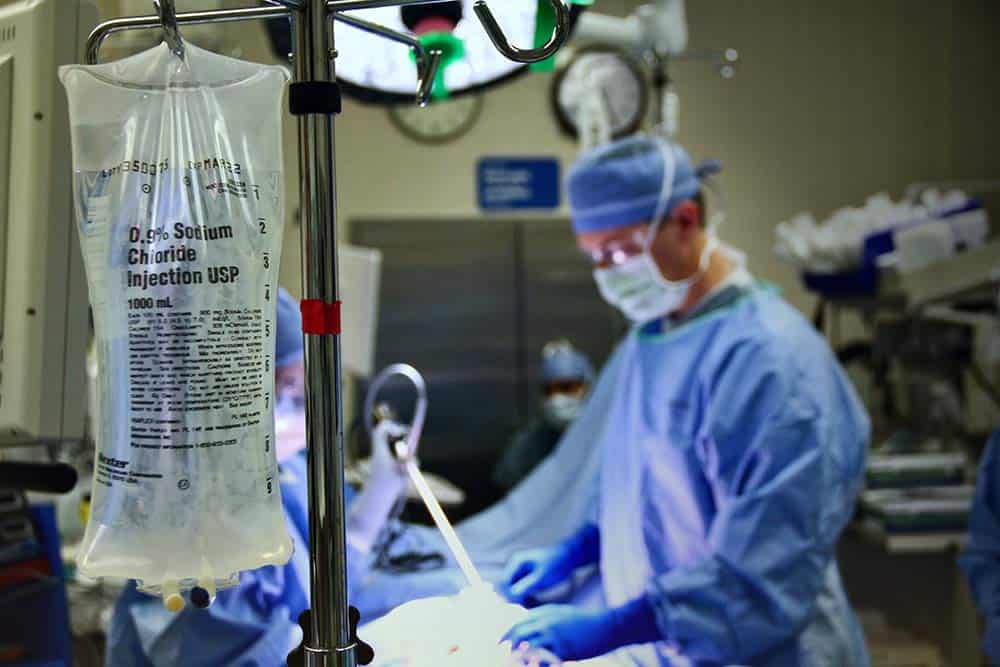Pelvic Adhesions
Pelvic adhesions (scar tissue) can cause the uterus, fallopian tubes and ovaries to get stuck together. Adhesions like this often prevent the reproductive organs from functioning normally, leading to pelvic pain and infertility. Adhesions can be difficult both to diagnose and to treat, but for women with pelvic pain and infertility, specialized surgical removal of this scar tissue can have a positive impact on their quality of life and fertility.
What causes pelvic adhesions?
Pelvic adhesions can form after a pelvic surgery, such as a C-section, surgery for endometriosis, or removal of an ovarian cyst. They can also form in response to an infection (such as pelvic inflammatory disease) or another condition like endometriosis or appendicitis.

What are the symptoms of pelvic adhesions?
Some women with pelvic adhesions experience no symptoms at all, while others have significant pelvic pain, pain with intercourse or painful ovulation.
For some women, infertility might be their only symptom. Scar tissue can block fallopian tubes or even prevent the ovary from ovulating normally, which can cause infertility. If conception does occur, pelvic scar tissue involving the fallopian tubes can also increase the risk of ectopic pregnancy.

How are pelvic adhesions diagnosed?
In some cases, adhesions may be suspected based on a woman’s symptoms, a pelvic exam, an ultrasound or a hysterosalpingogram. However, they can only be definitively diagnosed with a laparoscopy. This procedure allows a surgeon to determine the location and appearance of adhesions, and to assess how they may be affecting the function of the pelvic organs (particularly the tubes and ovaries).
How are pelvic adhesions treated?
Pelvic adhesions are treated primarily with laparoscopic surgery. The standard method of removing adhesions involves cutting the scar tissue using laparoscopic scissors or a cautery device (or in some cases, using “blunt dissection” to pull adhesions apart during surgery). These methods, while commonplace, result in a high risk of the scar tissue returning, since they cause so much trauma to pelvic tissues.

Our Approach
Since the goal of adhesion removal is to restore normal anatomy, decrease pelvic pain, and improve fertility, the doctors at Veritas Fertility and Surgery take a different approach to the treatment of this condition. Using the specialized techniques of NaProTECHNOLOGY surgery, we use a CO2 laser to remove all adhesions (instead of just burning or cutting the scar tissue) and takes every possible step to restore normal pelvic anatomy, which helps reproductive organs function as they should.

While there is always a risk of scar tissue returning after the removal, several measures can be taken to minimize this risk, including:
- Repairing the reproductive organs and pelvic tissues with microsurgical techniques
- Ensuring all pelvic tissues are hemostatic (free of bleeding and oozing) during and at the end of the procedure
- Using anti-adhesion fluids and dissolving barrier agents
- Wrapping the uterus, tubes, and ovaries in a Gore-Tex membrane (in cases of extensive scar tissue) to prevent these organs from getting stuck together after removal of pelvic adhesions.
At Veritas Fertility & Surgery, we want every treatment we provide to support the health and fertility of our patients. That is why – despite the technical complexity of this approach – we only provide fertility-focused reproductive surgery for the treatment of pelvic adhesions.
